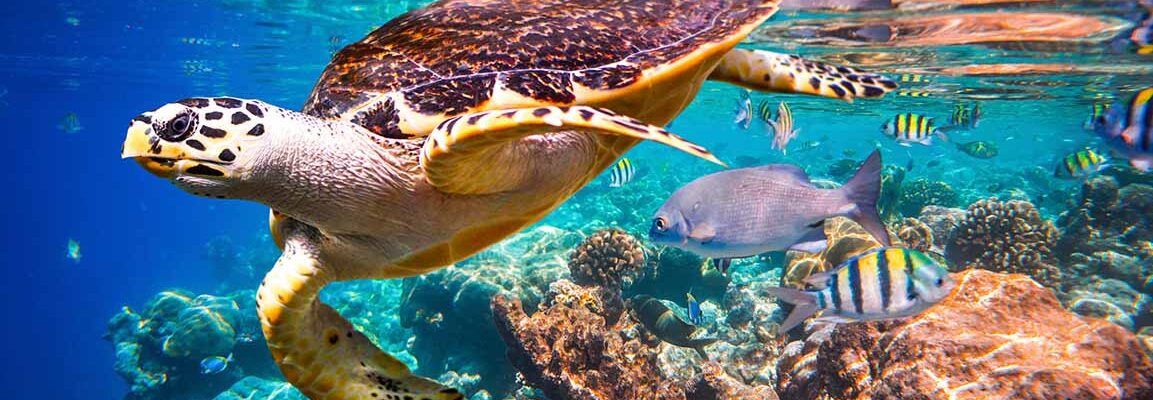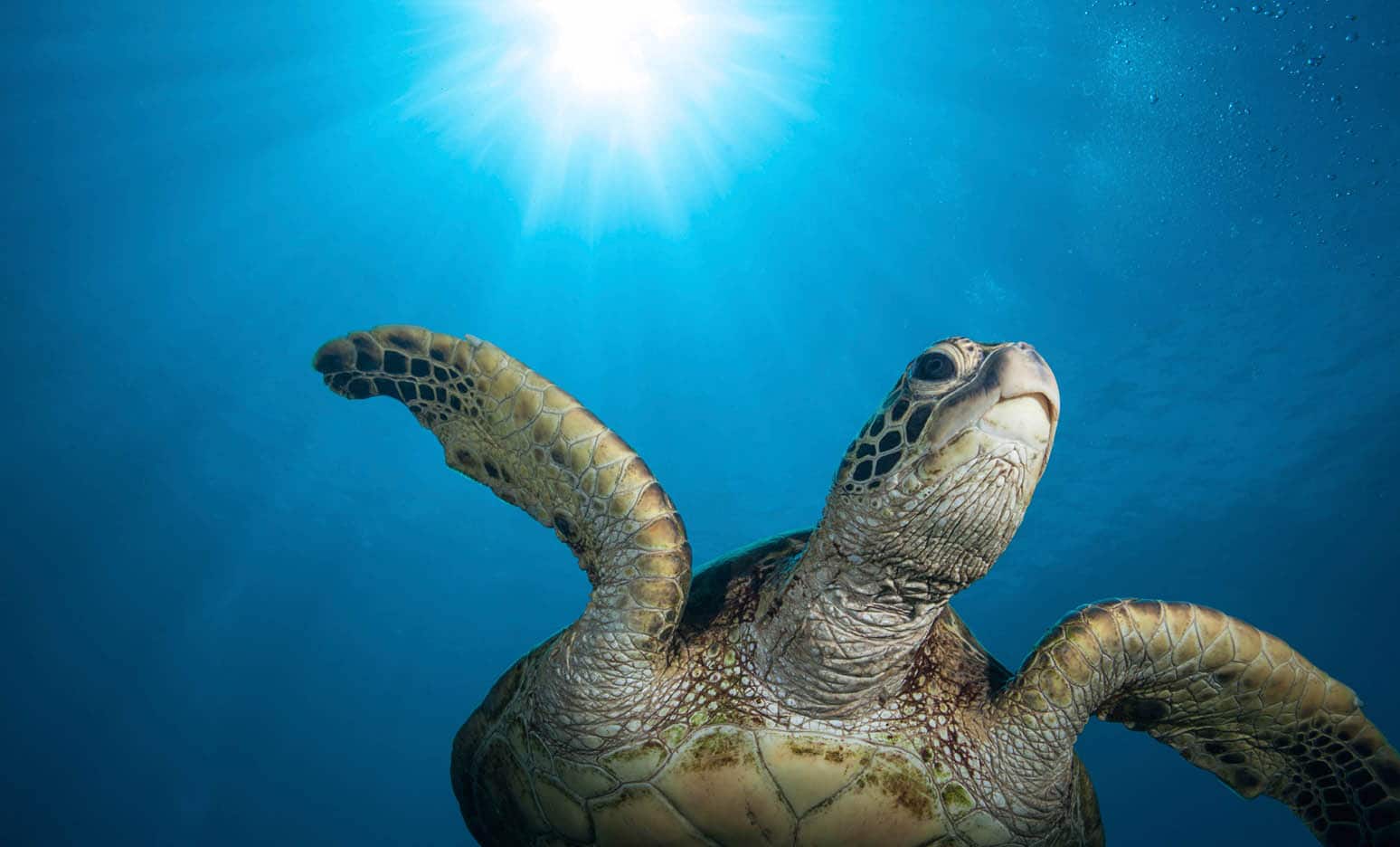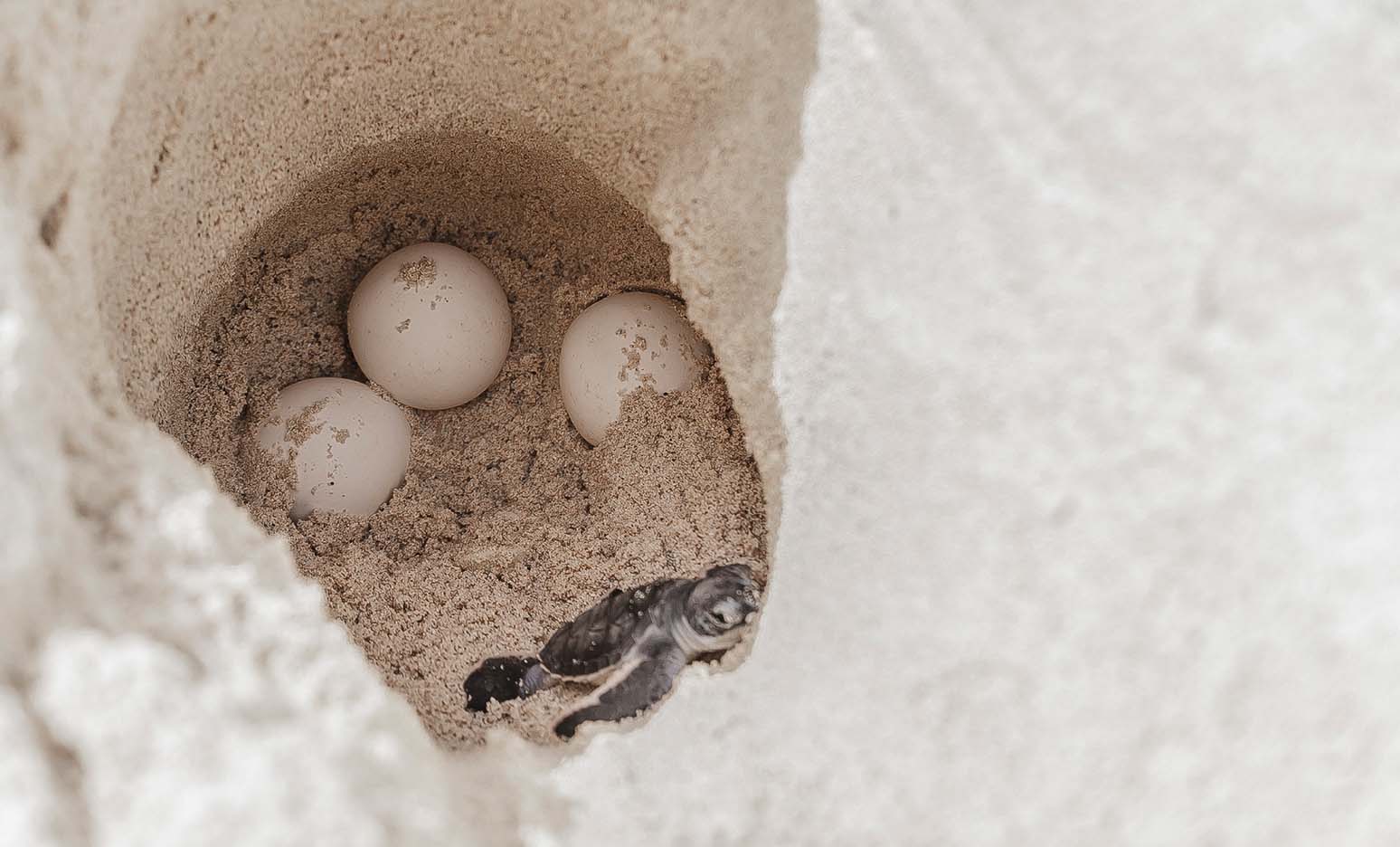Sea Turtle Nesting Season Continues at Sanibel Island
To live as the sea turtle – in the smooth, soft glide of the silent underwater world. It is splendid living and beautiful, a realm of seeming artistry and grace.
At Sundial Beach Resort & Spa, we embrace the ecological phenomenon of this ancient creature. Oceanographers believe the sea turtle is one of the planet’s most ancient creatures. It is estimated sea turtles have been around for 110 million years, dating to the dinosaurs. Seven species can be found today.
The sea turtle is unique, in so many aspects. Its streamlined shell – the “carapace” – allows it to swim easily through water, and, unlike other turtles, it cannot retract its head or legs, according to www.defenders.org. Shell colors vary depending on the species and include yellow, green and black.
Little is Known About the Ways of the Sea Turtle
Beyond their seemingly graceful yet forceful movement through water, little much else is known about the sea turtle because of their solitary existence, according to www.conserveturtles.org.
Males and young sea turtles do not return to their place of hatching on the shore – once they reach the ocean. Population estimates are elusive because of their solitary habits. Found throughout the world, sea turtles typically go on long migrations, up to 1,400miles, between their nesting places on beaches and where they feed.
Sea turtle diets include jelly fish, seaweed, crabs, shrimp, sponges, algae and mollusks.
Most of the information on sea turtles is gathered from observing sea turtles during their egg hatching. Usually females return to the same nesting ground where they were born and build their nests with their back flippers to bury their eggs. Then they return to the ocean, never to return again. The young sometimes take up to a week to dig themselves from their nests where they appear at night and enter the ocean to lead solitary lives until they mate.
According to www.defenders.org, sand temperature determines the sea turtle’s gender: cooler sand (below 85 degrees) typically produces males; higher temperatures produce the females. The size of the clutch of eggs varies, depending on the species, between 70 – 190 eggs. Few survive.
In Florida, sea turtles typically begin nesting in May. Hatching continues until late October. Nesting usually takes several hours, according to www.seefloridaonline.com. Eggs are about the size of a ping-pong ball. The eggs take about two months to hatch.
Sanibel Gets Conservation Grant to Help Save Sea Turtles
It’s sea turtle nesting season! The Sea Turtle Conservancy’s Sea Turtle License Grant Program gave the city of Sanibel $6,000 for an educational campaign called After 9, It’s Turtle Time! City officials used the money to make light-switch stickers, static-cling window decals and posters. The city is distributing the material to beachfront resorts, property owners and managers and rental businesses to place at beachfront properties.
City officials hope the information will serve as a reminder to residents and visitors about turning off beach lights at night, which will help curtail the thousands of annual hatchling deaths due to disorientation. Artificial lighting at nights confuses newly born sea turtles searching for ocean waters. Newly born sea turtles travel toward artificial lighting, believing it’s the light from stars or the moon. The disorientation has led to large losses of sea turtles.
Sundial Beach Resort & and Spa has numerous nests, many of which have already begun hatching.
Looking for the finest experiences Florida has to offer? Sundial Beach Resort & Spa celebrates the best things in life. For more information, call 239-395-6030.
For regular Sundial Beach Resort & Spa news, updates and travel tips, check our blog or follow us on Facebook, Twitter, Instagram, Google+ and Pinterest.








